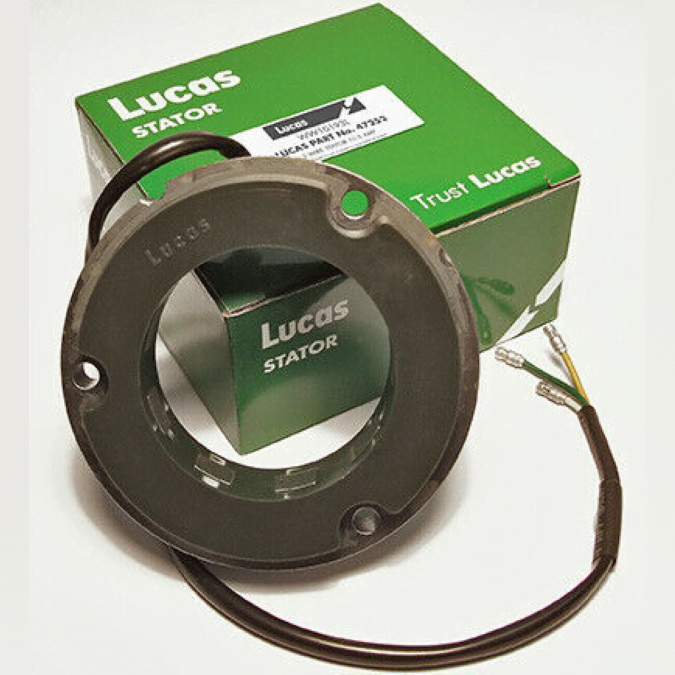- Joined
- Feb 10, 2009
- Messages
- 3,173
I’m certainly not worried about 12 A across negligible resistance roasting the stator, lights on or lights off.Interesting numbers there, better than I’d expected I think.
I’m certainly not worried about 12 A across negligible resistance roasting the stator, lights on or lights off.Interesting numbers there, better than I’d expected I think.
I’m certainly not worried about 12 A across negligible resistance roasting the stator, lights on or lights off.
This was a pilot base LED from Paul Goff. It fits in my Vincent headlight, second spot.Really? It can’t have been his T10 pilot. Honestly, at bike night meets this has proven itself brighter than some old boys headlights !
Look here:
IMHO I would only buy Goffs bulbs from Goff. Many of these things look identical… until you switch them on !
The Shorai seems to be one of the better quality products coming out of China.Me neither. My worry is only if the system can keep a Shorai happy charged up.
It is doing so far, but I’ve only just tried one. It’s LA battery gave up the ghost so I put the Shorai on from the Norton. It instantly turned it over MUCH faster (e start) and started it much quicker. And it weights 8.5 lbs less to boot!
Being an electric start, with no provision for a kick start, a healthy battery is kinda important !
I thought it was time to attempt to answer to this, but Mr Tiller has hidden his web page. I’m very very displeased that someone has told him about my flatulence.He covers a lot in the linked article, mind sharing which parts you’re unconvinced by and why?
His site is still up.I thought it was time to attempt to answer to this, but Mr Tiller has hidden his web page. I’m very very displeased that someone has told him about my flatulence.
From what I could see, the alternator is self-limiting for current. Short-circuited it refused to go over 17 A, over a wide rev range.
Connected to the charging system, it refused to go over 12 A (or maybe 15 A, subject to observer error), whether the 60 W headlight was on or off. It’s accepted that alternator voltage rises with rpm. I think that explains why I didn’t see 12 A until revving well over 3000 rpm.
If I remember right, GTiller said that when you switch the light off, the power then somehow happens in the stator instead of the lamp and the stator gets hotter. I’m saying the current and resistance in the stator don’t change when you switch the lights off, therefore the power in the form of heat in the stator doesn’t change.

This bit isn’tHis site is still up.
Well,.you did harass him a bit call him an enthusiastic amateur. Which, BTW is what we all are.This bit isn’t
I thought it was time to attempt to answer to this, but Mr Tiller has hidden his web page. I’m very very displeased that someone has told him about my flatulence.
From what I could see, the alternator is self-limiting for current. Short-circuited it refused to go over 17 A, over a wide rev range.
Connected to the charging system, it refused to go over 12 A (or maybe 15 A, subject to observer error), whether the 60 W headlight was on or off. It’s accepted that alternator voltage rises with rpm. I think that explains why I didn’t see 12 A until revving well over 3000 rpm.
If I remember right, GTiller said that when you switch the light off, the power then somehow happens in the stator instead of the lamp and the stator gets hotter. I’m saying the current and resistance in the stator don’t change when you switch the lights off, therefore the power in the form of heat in the stator doesn’t change.
For those not offended by rude words, these are GTiller’s current (!) thoughts on Faraday’s equation:

Yes I probably was quite annoying, but I wanted clear answers that made sense, or were authoritative.Well,.you did harass him a bit call him an enthusiastic amateur. Which, BTW is what we all are.
I haven’t reached that bit yet.This was also supported by the paper mentioned in post #e33 by HRD.
I do not believe he ever said that zeners did that! He agreed with you that the zener set up kept the alternator always working at 100% “as it was designed to do”.Yes I probably was quite annoying, but I wanted clear answers that made sense, or were authoritative.
Mr Chong-Zhi Liaw’s article linked previously does look authoritative, but a lot of it baffles this enthusiastic amateur.
I was reluctant to accept that a regulator or Zener shorting the AC or the DC overheats these alternators, necessitating big expensive series regulators. I’m now even further from accepting it.
The first statement is actually in support of your zener argument !The alternator is “always working at 100%” in that it is producing full current.
If that current doesn’t go through significant resistance, such as a big headlight, then the alternator isn’t doing much work.
As Glen reminded us earlier, Comnoz saw dyno proof of a power gain (1.5bhp IIRC) when trying the open type regulator. That clearly indicates that some ‘work’ is taking place otherwise. 1.5bhp worth of work.
With the short type regulator, any heat generated by that ‘work’ has nowhere to go and therefore has to remain within the stator.
1.5 BHP is 1,119 W.
